by Dr. Anand Titus and Geeta N. Pereira
Coffee plantations occupy an important part of the Western Ghat landscape. This biological hot spot is home to thousands of species of rare and endangered plant and animal life. Hither to scientists were busy mapping the biotic flora and fauna that was visible to the naked eye.
Our brave predictions indicate that this hot spot also consists of rare and important invisible microorganisms, yet to be discovered by mankind. In fact, scientists have just skimmed the surface. They need to dig much deeper. This microbial hot spot will surely leave the scientists gasping with more questions than answers. Even though, we do not see any microorganisms, they are all around us.
Of late, due to large scale destruction of forests and mining, there seems to be an ecological collapse and many species of beneficial microorganisms are being wiped out. We need to provide a sanctuary for these microorganisms because they are key links to the sustainability of the biotic partners within the coffee mountain. Besides the fact of exploring a new microbial world , what perhaps is of significance is that there is one which would share a similar history as that of evolution of higher forms of life.

Each coffee mountain is unique and distinct and harbors a secret world of microbes. Individuals have different markings to recognize the species. It is important to understand that shade grown Indian coffee farms provides a natural environment for the growth and proliferation of various microbial groups. For a number of reasons, the microbial inhabitants are in constant touch with both the macro flora and other inhabitants of the coffee mountain. It is this very complexity that has saved the evergreen coffee mountain from changing into a desert.
The micro flora has established a set of rules that favors the build up of a desired species, such that the dynamic state of the entire coffee range is maintained at a level characteristic of the flora. More importantly, the biological equilibrium among and between microorganisms is regulated to a large extent by the overhead canopy of a three tiered shade system which is unique only to India.
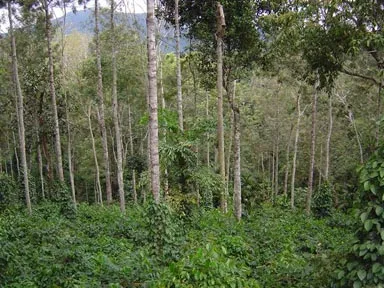
Heterogeneous tree populations, not only provide regulated shade to the coffee canopy, but due to the characteristic feature of leaf and fruit shedding at various intervals along with the incorporation of various crop residues favors the build up of both primary and secondary microflora.
Many soil microbiologists have reported that the decomposition of a number of natural products is occasionally more rapid in mixed microbial populations rather than with the introduction of pure cultures. The explanation for the phenomenon is obscure but it nevertheless points out to the fact that the coffee mountain provides an excellent environment for the growth and proliferation of billions of microorganisms and they in turn contribute to the well being of the coffee mountain. Microorganisms clearly demonstrate a certain safety in numbers.
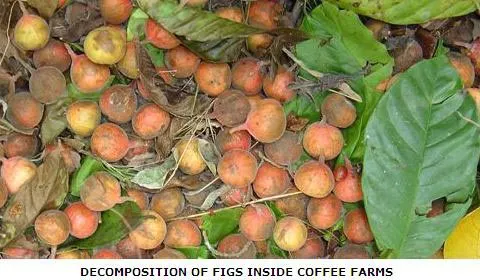
The present article throws light on yet another very important soil microorganism, namely ACTINOMYCETES, commonly observed in Indian coffee farms. Actinomycetes have evoked much curiosity since the discovery of microorganisms by Antony Van Leeuwenhoek, in the 17th century.

Actinomycetes are microscopic soil microorganisms and are known to play a very supporting role in the degradation of organic matter in coffee habitats. These micro organisms have characteristics common to both bacteria and fungi and yet possess sufficient distinctive features to classify them into a separate category. Actinomycetes produce slender, branched filaments that develop into a mycelium. The filament may be long or short, depending on the species. They form an aerial mycelium, much smaller than that of fungi and many species produce asexual spores called conidia. In fact the leathery or powdery appearance of actinomycetes colonies is due to the production of conidia. In abundance, they are second only to Bacteria.
The resemblance of actinomycetes to bacteria is because the actinomycetes species contain peptidoglycan in their cell walls and possess flagella similar to that of bacterial flagella. In addition actinomycetes are sensitive to antibacterial antibiotics and not antifungal antibiotics. Actinomycetes are also sensitive to lysozyme. Actinomycetes differ from fungi in their cellular composition. They do not possess chitin and cellulose which is found in the cell wall of fungi.
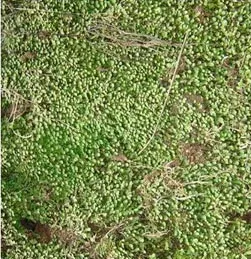
Immediately, after the very first showers inside the coffee mountain, the red earth smells of a musty odor and farmers are confused as to the origin of the odor. They can be rest assured that the odor is the consequence of the presence of actinomycetes. Many soil scientists have identified the compound or compounds responsible for the earthly odor. The streptomyces metabolite, known as GEOSMIN is largely responsible for the earthly odor. However, other volatile products secreted by streptomyces may also be responsible for the characteristic smell.

Contribution of Actinomycetes:
- Degradation of lignin
- Degradation of organic matter
- Degradation of chitin
- Formation and stabilization of compost piles
- Formation of stable humus
- Production of antibiotics
- Combine with other soil microorganisms in breaking down tough plant and animal residues
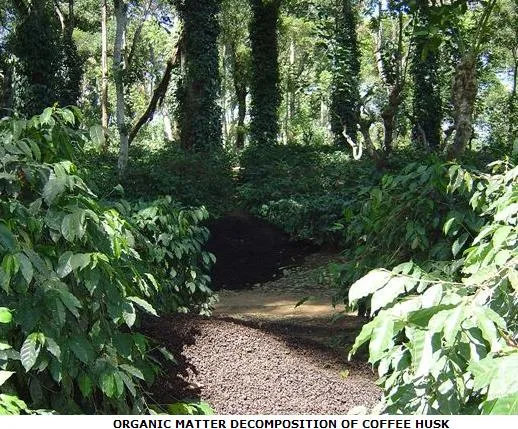
Major Group of Actinomycetes:
I. Streptomycetaceae:
- Streptomyces
- Microellobosporia
- Sporichthya
II. Nocardiaceae:
- Nocardia, Pseudonocardia
Micromonosporaceae:
- Micromonospora
- Microbispora
- Micropolyspora
- Thermomonospora
- Thermoactinomyces
- Actinobifida
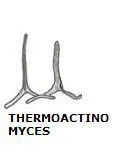
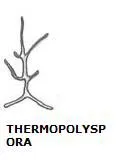
IV. Actinolanaceae:
- Streptosporangium
- Actinoplanes
- Planobispora
- Dactylosporangium

V. Dermatophilaceae:
- Geodermatophilus
VI. Frankiaceae:
- Frankia
VII. Actinomycetaceae:
- Actinomyces
Influence of Coffee Plantations on growth and development of Actinomycetes:
Microorganisms experience changes in mood depending on a host of conditions.
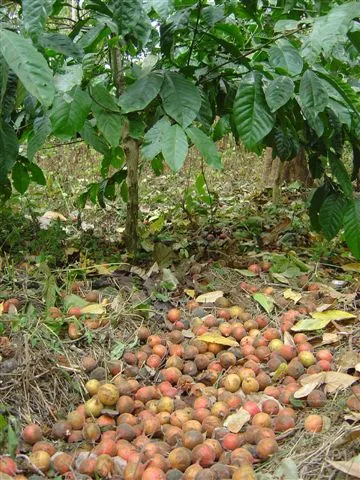
Organic Matter:
The addition of organic matter to coffee soils stimulates the multiplication and activity of actinomycetes. Actinomycetes belonging to the genera Thermoactinomyces and Streptomyces are commonly observed in compost pits. Pastures or open grasslands converted into coffee plantations have a relatively low population of actinomycetes, primarily due to poor organic matter content. Established farms with abundant tree cover promote the activity of actinomycetes.
Coffee farmers can improve the count of the actinomycete population by simply adding organic amendments like cattle, poultry and sheep manure along with crop residues.
pH:
Alkaline and neutral soils are more favorable for the development of actinomycetes. The optimum pH range for the activities of actinomycetes is in the range of 6.5 to 8.0. They cannot survive in acidic Ph. In soils, with Ph less than 5.0 they are almost absent.
Coffee farmers worldwide have an important lesson to learn in the control of certain plant diseases, by simply observing the behavior of different actinomycete species to varied ph levels. Alexander Martin, a leading authority on soil microbiology is of the opinion that Ph of less than 5.0 has practical application in the control of certain plant diseases produced by streptomyces; that is, acidification of the soil is used to suppress the pathogen. He further states that even continuous applications of ammonium fertilizers without lime suppresses the actinomycetes, since the ammonium is oxidized to nitric acid by microbial action and the resultant fall in pH leads to unfavorable growth conditions of the pathogen. Liming generally has a beneficial effect because vegetative development is favored by neutral or alkaline conditions, the population being most abundant in soils of Ph 6.5 to 8.0.
Moisture:
Actinomycetes are mainly aerobic and as such enjoy well aerated soils. Water logged soils with 80 to 90% moisture is detrimental for the survival of actinomycetes. If proper drainage is not maintained inside the coffee plantations, especially during the rainy season, then conditions leading to Waterlogging destroy the population of actinomycetes.
Soil Depth:
The percentage of actinomycetes in the total microbial population increases with the depth of soil. However, they are also found in surface soils.
Temperature:
The ideal temperature for the growth of actinomycetes is in the range of 25 to 30 degree centigrade. As such most actinomycetes are mesophilic, however, thermophilic actinomycetes play an important role in the transformation of various organic residues inside compost pits.
The most common genera of actinomycetes inhabiting the soil are the Streptomyces, Nocardia and Micromonospora.
Chemical Composition:
The actinomycetes cell has a carbon content of 45% and a nitrogen content of 10%. Lipid content varies from 12 to 65%. Some species have hexosamine in the cell wall to the extent of 2 to 18%. The protein and amino acid content of a select few species, namely streptomyces and Nocardia are as follows: Alanine, Methionine, Valine, Arginine, Lysine, Leucine, hexosamine, Isoleucine, Glutamic acid, Diaminopimelic acid, Threonine, Asparagine.
Actinomycetes in Relation to the Coffee Environment:
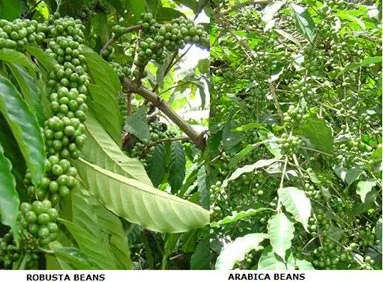
The coffee habitat has a profound influence on the qualitative and quantitative actinomycete flora. Especially, in summer, during prolonged droughts, the coffee soils are exposed to high temperatures and subjected to long dry spells. These harsh environmental conditions favor the survival of actinomycetes, because of the production of conidia which can withstand desiccation and high soil temperatures.
Actinomycetes are heterotrophic; hence depend on the availability of organic substrates for their growth and development. Nutritionally, Coffee farmers need to understand the sequences of organic matter decomposition. Initially, it is the bacteria and fungi that are active in attacking the organic substrates. Actinomycetes develop at a much later stage of plant residue decomposition. Especially, when nutrients are scarce and bacterial and fungal populations are at low ebb, actinomycetes are more prominent. The organic fabric of the coffee mountain is constantly acted upon by various species of actinomycetes.
Many researchers have observed cellulose decomposition by many species of actinomycetes in pure culture, but the rate of decomposition is invariably slow. Many species are known to degrade proteins, lipids, starch, inulin, and chitin, cellulose and hemicellulose.
A few strains, belonging to the order Actinomycetales are known to synthesize toxic metabolites.
A Whole New World of Microorganisms:
In our opinion, mankind has yet to discover the potential of microorganisms. The list of microorganisms discovered and identified is just the tip of the iceberg. As and when scientific tools become advanced, so also man will appreciate the goodness of microorganisms in maintaining a proper ecological balance. At present the tools to isolate and identify microorganisms from different depths does not exist.
Literally, microorganisms are the FUEL CELLS of the world. Just imagine a world without microbes-the world would be full of unrecompensed debris making it impossible for any biological activity. There is a whole big world to be discovered. The fact is microorganisms are present almost everywhere and with their short generation time they can be easily tailored to benefit the plantation ecology. They are efficient, invisible, do not occupy precious space and most importantly silently work day in and day out. We need to participate in conservation on a large scale.
Microorganisms can literally occupy any inhospitable terrains right from volcanic ash soils to the depths of oceans and the upper reaches of the atmosphere. With satellite technology scientists are probing our planetary system for the presence of microbial life.
Life on earth evolved from a primordial organic soup and microorganisms were the first inhabitants of planet earth. The organic reactor of life was in a soup of water. Complex forms of life arose from this primal ooze. Without their presence and role in breaking down complex organic and inorganic molecules and feeding it into food chains the earth and oceans would be filled with garbage and toxic wastes making it impossible for human habitation.
Isolation of Actinomycetes:
Since actinomycete colonies are slow growers compared to bacteria and fungi, they get easily masked in culture plates when grown on ordinary nutrient media. Hence, the easy way out to isolate these microorganisms from soil is by using differential media.
Actinomycetes are capable of growing in media containing low nitrogen; hence, media like Ken-Knight’s, egg albumin or Conn’s medium are used to isolate them.
Plant pathogenic actinomycetes such as Streptomyces scabies are isolated by using tyrosine-casein-nitrate agar medium. In general, actinomycetes are cultured in yeast extract or Czapek’s medium.
Conclusion:

The undisputed beauty of the coffee mountains is due to the forest factor. The awesome tree canopy provides filtered Shade to coffee plantations and protects both the micro and macro flora from direct sunlight. Soil temperatures too are kept at an optimum.
Shade grown Indian coffee plantations are more than 200 years old and operate under a set of unwritten rules and regulations that has stood the test of time. The success of these coffee farms is primarily due to the fact that the idea of sustainability has been woven into the fabric of village life right from the very beginning WITH THE INVISIBLE AID OF THE MICROFLORA. It was designed that way.
Microorganisms play an important and vital role in feeding the energy requirements of the coffee mountain. The great cycle of death and rebirth was made possible by the active participation of microbes. It is no secret that microbes thrive in the most demanding of places.
We need to draw from these experiences and respect traditional fundamentals before we blindly embrace the modern tools of agriculture.
The Indian coffee plantations have undergone a metamorphosis over the years. Farming has become an Industry. The conflict between man and nature is ever increasing. Coffee farms are under tremendous stress for a whole variety of reasons, like global warming, low price realization, and dip in global consumption. It is neither an accident nor a coincidence that coffee forests are shrinking at an alarming rate.
Mountains and hills disappear due to logging and mining. The destruction of forests leaves plants and microbes with great problems. The Survival of microorganisms is a struggle in itself, even before they are born. We need to work with microorganisms and talk to them. Coffee farmers have misunderstood them. Microorganisms play a central role in nature’s clean up. Right from food chains to food webs, they form the cradle of life sustaining food.
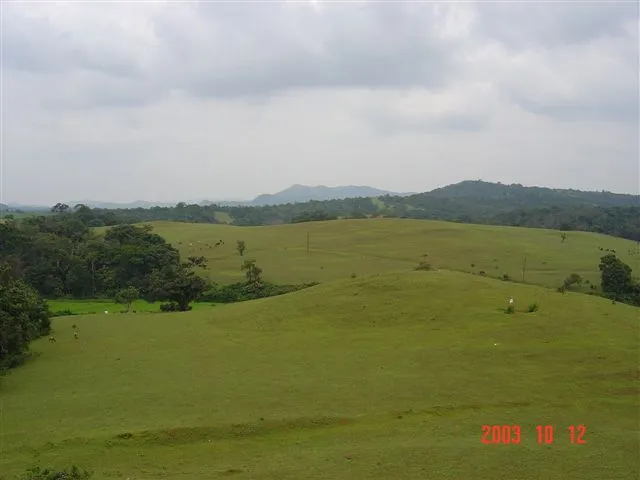
The food security of the world is dependant on forests. Natural resources are vanishing. The fragile nature of change inside the coffee mountain is a reminder of the events unfolding in the coming months. May be some day in the future, this generation will be ashamed for destroying the very fabric of the forest that was supposed to protect future generations.
Pavan Suhdev, an International banker and Director of the Green Accounting for Indian States Project (GAISP) SAYS: “India’s forests deliver vast economic benefits, which we simply do not account for in our Gross Domestic Product (GDP). GAISP is in the process of setting up a system to measure the unaccounted economic value of forests from conservation and natural forest growth, as well as losses due to deforestation”.
References:
- Role of Bacteria in Coffee Plantation Ecology
- Role of Fungi in Coffee Plantation Ecology
- Biological Control of Soil Borne Pathogens
- Invisible Communications in Coffee Plantations
- Coffee Plantations A Multidisciplinary Approach
- Organic Matter Decomposition In Coffee Plantations
- The Fine Art of Composting In Coffee Plantations
- Farm Coffee Organic Manures
- Alcamo. E. 1983. Fundamentals of Microbiology. Addison-Wesley, Reading, Mass.
- Alexander ,M. 1974 . Microbial Ecology. New York. John Wiley and Sons.
- Alexander ,M. 1977 . Introduction to soil Microbiology. 2nd edition. New York. John Wiley and Sons
- Atlas, R.M. and R. Bartha. 1993. Microbial Ecology : Fundamentals and application. Third edition. Benjamin/Cummings Pub. Co. New York.
- Buchanan, R. E. and Gibbons. N.E. ( Eds. ) 1974. Bergey’s Manual of Determinative Bacteriology ( 8th ed. ). Williams and Wilkins Co. Baltimore.
- Brock. T. D. , Smith, D.W. and Madigan,M.T. 1984. Biology of Microorganisms. Englewood Cliffs. Prentice-Hall.
- Coffee Guide. Sixth edition,2000. Central Coffee Research Institute, Coffee research station, Chickmagalur District. Karnataka.
- Collins, R.P., L.E. Knaak, and J.W. Soboslai. 1970. Lloydia, 33 :199-200.
- David. B. Alexander, 2002. Bacteria and Archaea (chapter 3). In Principles and applications of soil microbiology. Edited by David M Sylvia, J.J. Fuhrmann, Peter G Hartel and David A Zuberer. Prentice Hall. Upper Saddle River, NJ 07458
- Henis. Y. ( ed ). 1987. Survival and dormancy of microorganisms. John Wiley & Sons, Inc. New York.
- Kendrick. B. 1992. The fifth kingdom. Focus Texts, Newburyport. Mass.
- Rangaswami . G and Bagyaraj, D. J. 2001. Agricultural Microbiology. Second edition. Prentice-Hall of India Private Limited. New Delhi.
- Lechevalier,H.A. and M.A. Lechevalier. 1967. Annu. Rev. Microbiol., 21 : 71-100.
- Salle. A. J. 1983. Fundamentals Principles of Bacteriology. Seventh edition. Tata McGraw Publishing Company LTD. New Delhi.
- Subba Rao. N.S. 2002. Soil Microbiology (fourth edition of soil microorganisms and plant growth) Oxford and IBH Publishing CO. PVT. LTD. New Delhi.
- Starr.M.P., Stolp, H., Truper, H.G., Balows,A., and Schlegel,H.G. 1981. The Prokaryotes- A handbook on habitats, Isolation and identification of bacteria. 2 Vols. Springer-Verlag, New York.
- Waksman. S. A. 1959. The Actinomycetes. Vol. I. Nature, Occurrence and Activities. Williams and Wilkins, Baltimore.
- Waksman. S. A. 1961. The Actinomycetes. Vol. II.: Classification, Identification and Descriptions of Genera and Species. Williams and Wilkins Co. Baltimore.
- Woese, C. R and Wolfe, R.S. ( Eds .) 1985. Archaebacteria. Vol.viii : The Bacteria- A treatise on structure and function. Academic Press, New York.
- Paul. E.A. and Clark. F. E. 1996. Soil Microbiology and Biochemistry. Academic Press